So there I was last spring, staring at my bland beige living room and desperately craving that breezy, ocean-kissed vibe I’d fallen in love with during a weekend in Carmel. You know that feeling when you walk into a coastal home and immediately feel your shoulders drop? That’s what I wanted to recreate, but without looking like I’d raided a tourist shop’s clearance section.
After months of experimenting (and honestly, a few spectacular failures), I’ve nailed down what actually works for creating that effortless modern coastal look. Here’s what I’ve learned from transforming not just my own space, but helping friends avoid my mistakes.

Start With a Neutral Base That Actually Has Personality
I used to think coastal meant stark white walls, but that’s where I went wrong initially. My first attempt looked like a doctor’s office by the sea. Instead, I discovered that the most gorgeous coastal rooms use warm whites and soft off-whites as their foundation.
I ended up painting my walls in Benjamin Moore’s “Cloud White” – it’s got just enough warmth to feel inviting but still gives you that clean, airy backdrop. The key is choosing a white with subtle undertones rather than a pure, cold white. Trust me on this one; I spent $200 on the wrong paint the first time around.
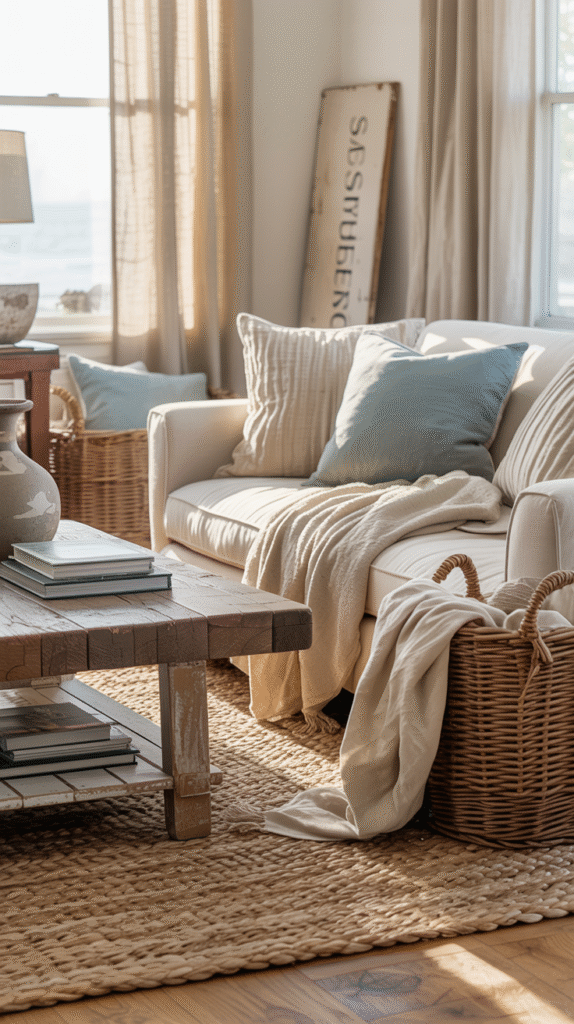
Layer Different Textures Like You’re Building a Sandcastle
This might sound weird, but coastal design is all about mimicking the varied textures you find at the beach. I learned this after my living room felt flat and one-dimensional for months. Now I layer in:
- A chunky jute rug that actually feels good underfoot (not those scratchy ones that make you want to wear shoes indoors)
- Linen throw pillows that wrinkle beautifully – don’t fight it, embrace the lived-in look
- A weathered wood coffee table that tells a story
- Woven baskets for storage that double as texture
The magic happens when you can run your hands over different surfaces and each one feels distinct. It’s like bringing the tactile experience of a beach walk indoors.
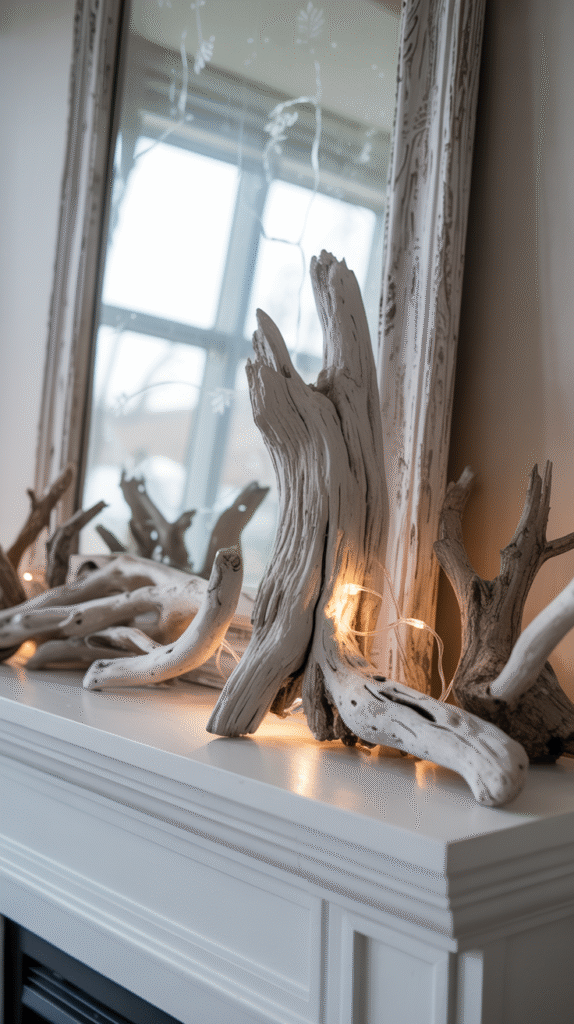
Embrace the Power of Driftwood (But Do It Right)
Here’s where I see people go wrong constantly – they grab any old piece of wood and call it “driftwood decor.” Real driftwood has this incredible silvery-gray patina that only comes from salt water and time.
I actually collected pieces during beach walks over several months, then learned how to clean and treat them properly. One piece became a stunning mantel decoration, and another turned into a unique table lamp base when I drilled it out and added simple white cord lighting.
Pro tip: If you can’t access real driftwood, look for reclaimed cedar or pine that’s been naturally weathered. Just avoid anything that looks artificially distressed – it screams “fake” from across the room.
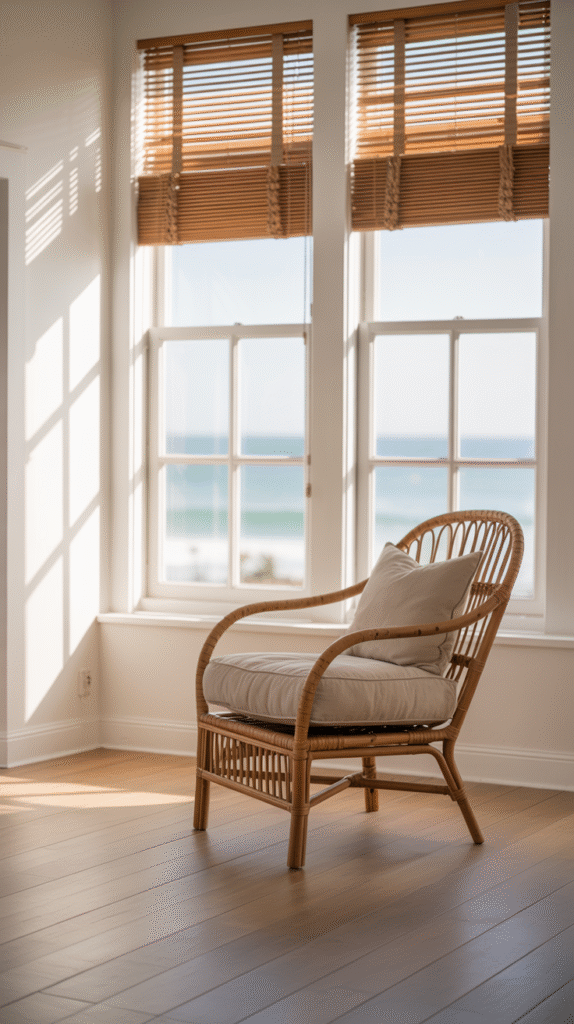
Let Natural Light Be Your Best Friend
I can’t emphasize this enough – coastal style lives and dies by natural light. When I first started this makeover, I had heavy curtains blocking most of my windows. Removing them was honestly scary (hello, privacy concerns), but it transformed the entire feel of the room.
Instead, I installed bamboo blinds that I can adjust throughout the day. Morning light filters through beautifully, and I can still have privacy when needed. The investment was about $300 for three large windows, but it made a bigger impact than any single piece of furniture.
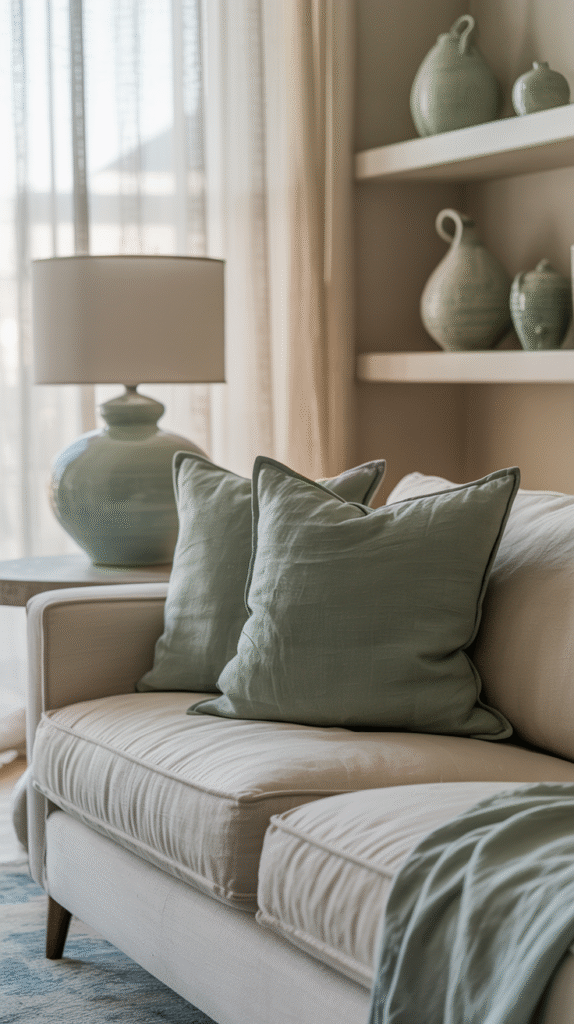
Add Sea Glass Colors (But Keep Them Soft)
Those Pinterest boards showing bright turquoise accents everywhere? Don’t fall for it. Real coastal homes use colors that look like sea glass after it’s been tumbled by waves – soft, muted, and almost translucent.
I incorporated these hues through:
- Sage green throw pillows that remind me of sea foam
- A pale aqua ceramic table lamp
- Soft blue-gray pottery pieces on floating shelves
The trick is using these colors as gentle accents, not bold statements. Think watercolor, not poster paint.
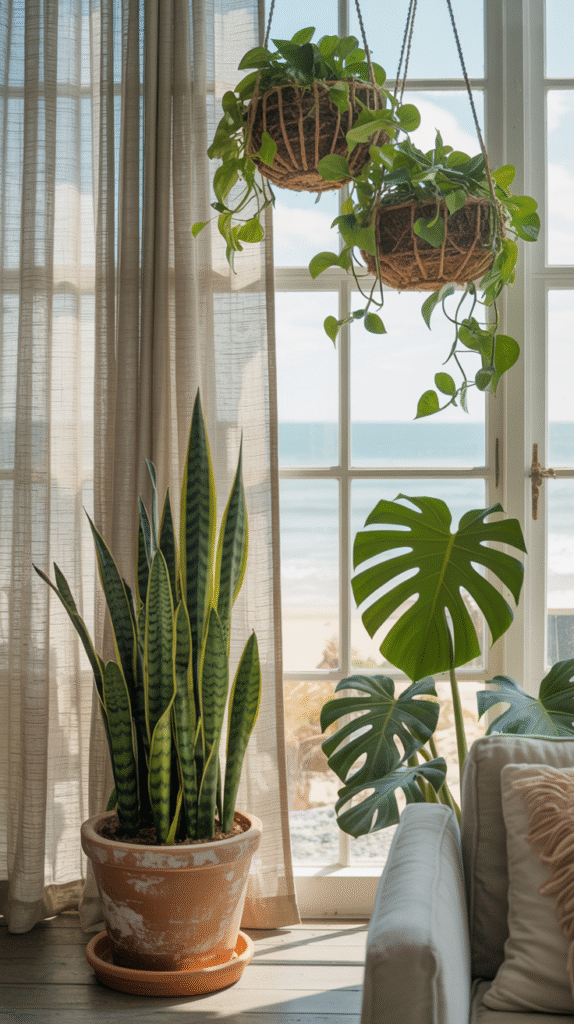
Bring in Living Greenery That Can Handle Salt Air (Metaphorically)
Plants make any space feel more alive, but coastal rooms need specific types. I learned this the hard way when my fiddle leaf fig basically had a nervous breakdown in my new bright, airy space.
Instead, I switched to:
- Snake plants that thrive in bright light
- Pothos in hanging planters near windows
- A large monstera that loves the humidity from my nearby kitchen
These plants not only survive but actually seem to love the coastal vibe I’ve created.
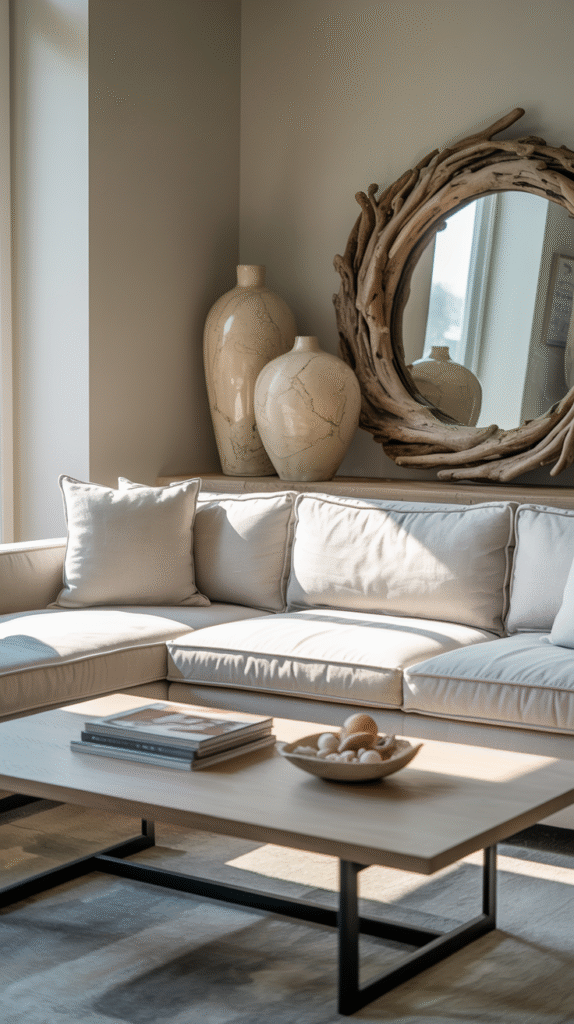
Mix Modern Lines With Organic Shapes
This balance took me forever to figure out. Too modern, and you lose the relaxed coastal feel. Too organic, and it starts looking like a beach shack. The sweet spot is combining clean-lined furniture with curvy, natural accessories.
My sectional sofa has straight, simple lines, but I’ve softened it with rounded pottery, organic-shaped mirrors, and that driftwood I mentioned earlier. It’s like having a conversation between structure and nature happening in your living room.
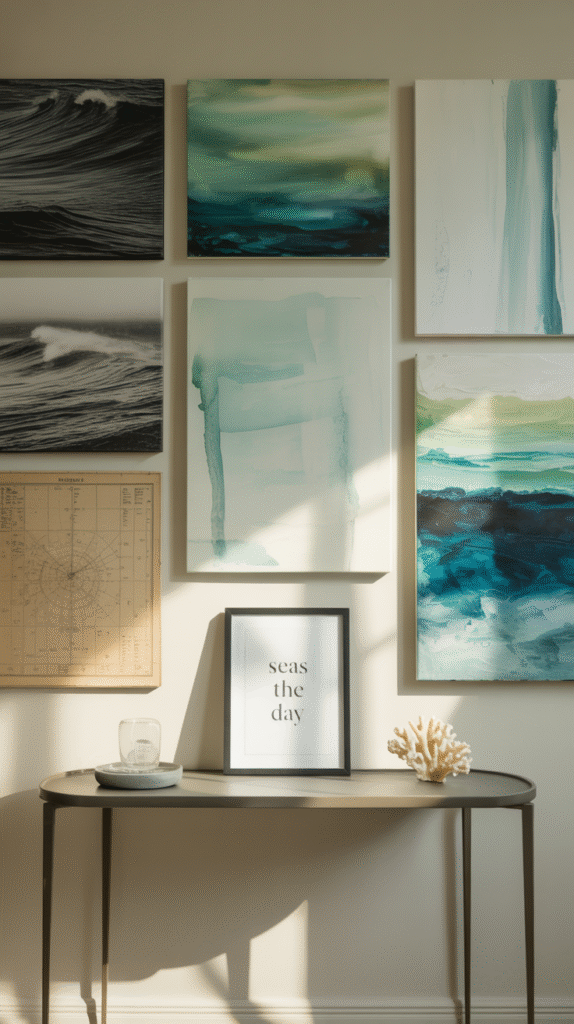
Create a Gallery Wall With Ocean-Inspired Art
I’ll be honest – I initially went overboard with seashell prints and lighthouse photos. It looked like a hotel lobby. The breakthrough came when I started thinking about the ocean as an abstract concept rather than literal imagery.
Now my gallery wall includes:
- Black and white photography of waves and shorelines
- Abstract paintings in those soft sea glass colors
- One piece of coral (ethically sourced, of course)
- Vintage nautical charts that actually mean something to me
The key is curation. Each piece should feel intentional, not like you grabbed everything with an ocean theme.
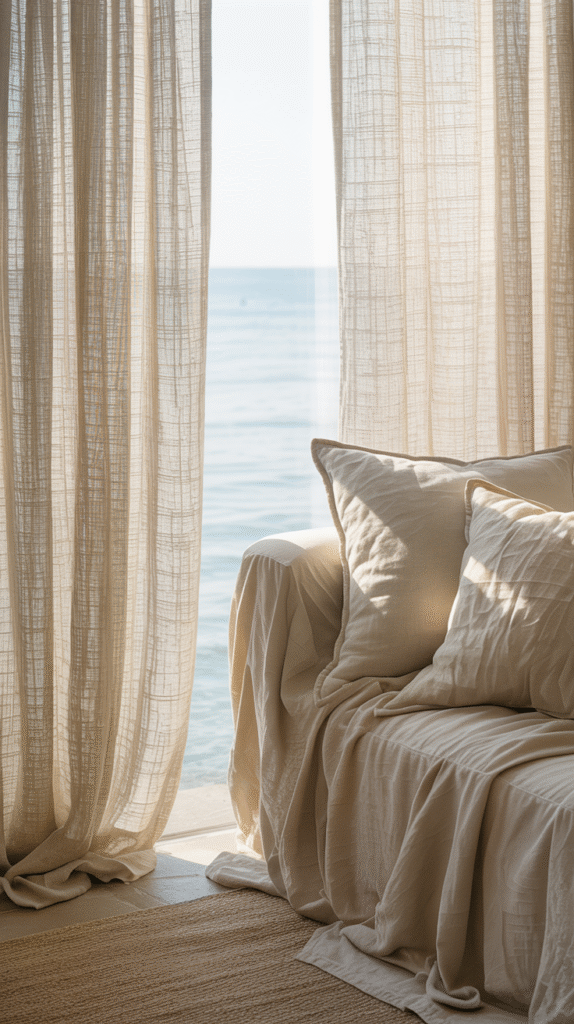
Invest in Quality Linen Everything
I cannot stress this enough – good linen is worth every penny. I started with cheap linen-look fabrics and they just didn’t have that effortless drape and soft texture that makes coastal style work.
Real linen gets softer with every wash and develops this beautiful relaxed quality that perfectly captures coastal living. Yes, it wrinkles, but that’s part of its charm. I have linen curtains, throw pillows, and even a linen slipcover for my armchair.
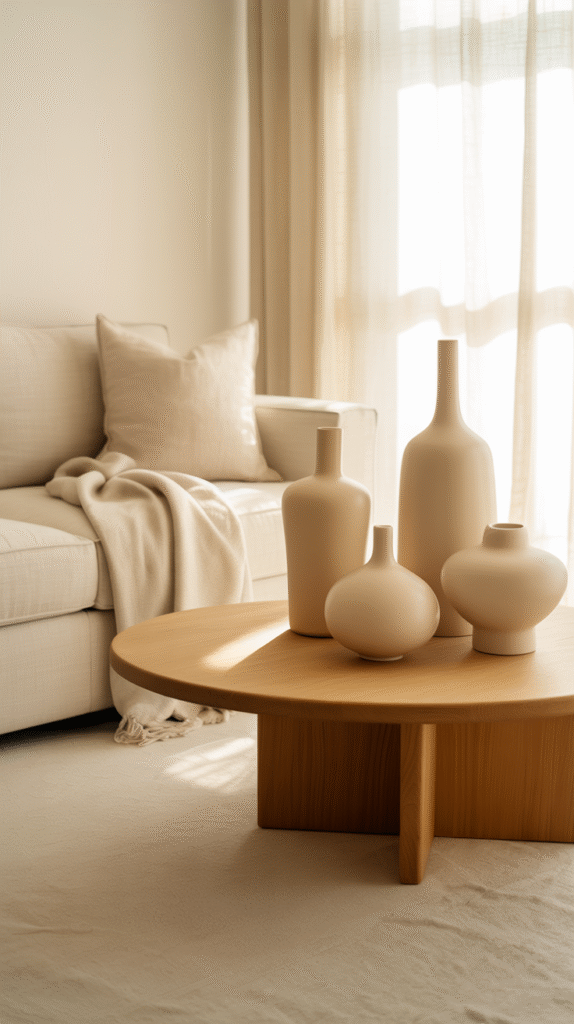
Layer Different Whites and Creams
This might sound boring, but it’s actually an art form. I have probably six different shades of white and cream in my living room, and they all work together to create depth and interest.
From my white oak coffee table to cream ceramic vases to off-white throw blankets, each shade brings something different to the space. The trick is making sure they all have similar undertones – either all warm or all cool.
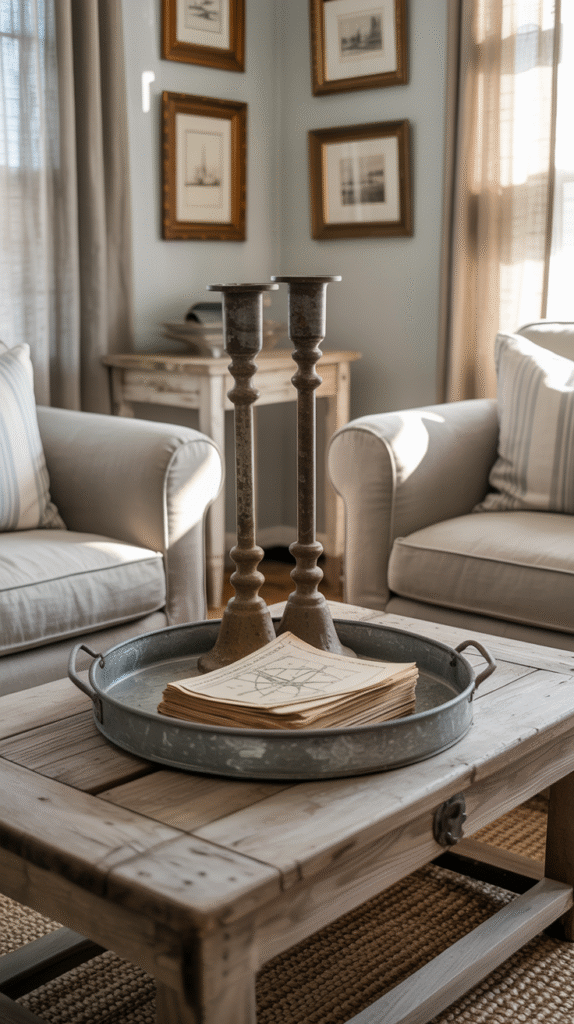
Add Unexpected Metal Accents
While brass and gold can work in coastal spaces, I’ve found that weathered metals create a more authentic feel. I incorporated:
- Iron candlesticks with a rusty patina
- Aged bronze picture frames
- A vintage-style galvanized metal tray for coffee table styling
These metals reference the hardware you’d find on old boats and beach houses, adding authenticity without being too literal.
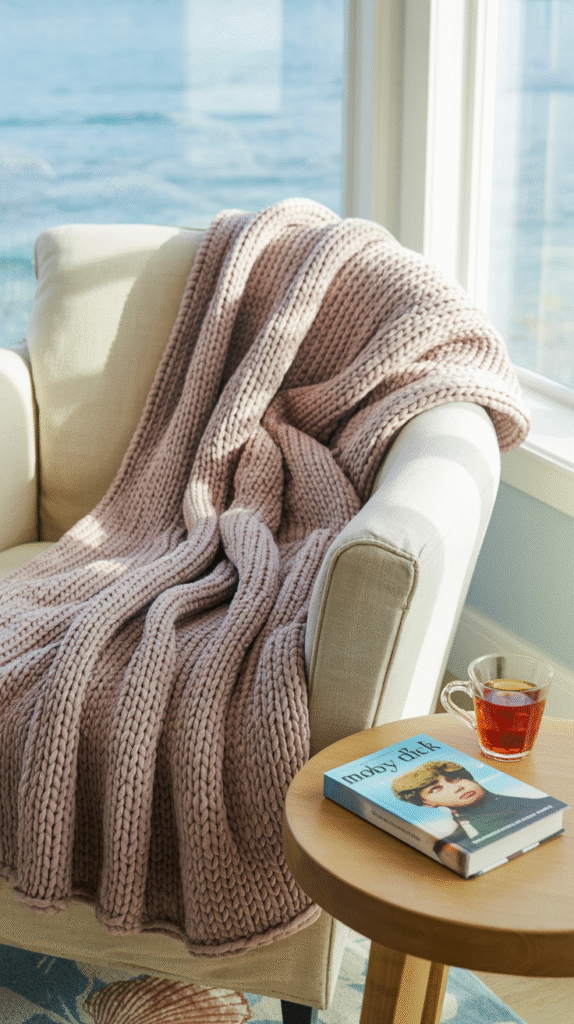
Create Cozy Nooks for Reading and Relaxing
Coastal living is about slowing down, so your space needs spots that invite you to linger. I created a reading corner by positioning a comfortable chair near my biggest window, adding a soft throw, and placing a small side table within arm’s reach.
The key is making these spots feel intentional but not overly designed. I want it to look like I just naturally gravitated to that spot with my morning coffee, not like I staged it for a magazine shoot.
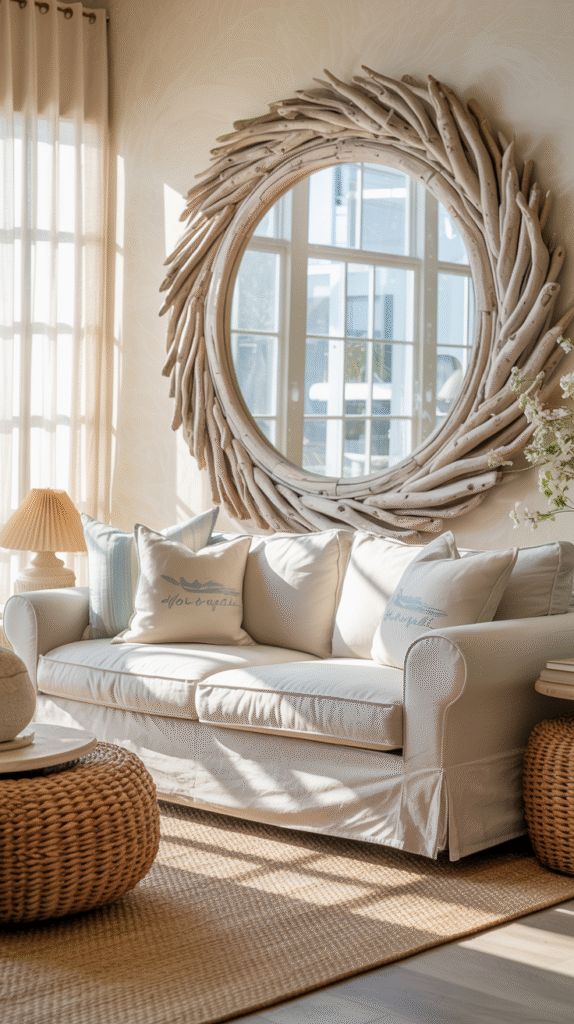
Use Mirrors to Amplify Light and Space
Mirrors are absolute magic in coastal design. I have three different mirrors in my living room, each serving a purpose:
- A large round mirror opposite my main window that bounces light around the room
- A smaller rectangular mirror that makes my narrow entryway feel wider
- An antique hand mirror displayed on a shelf as art
The trick is choosing mirrors with interesting frames – weathered wood, rope details, or simple metal – that add to your coastal story.
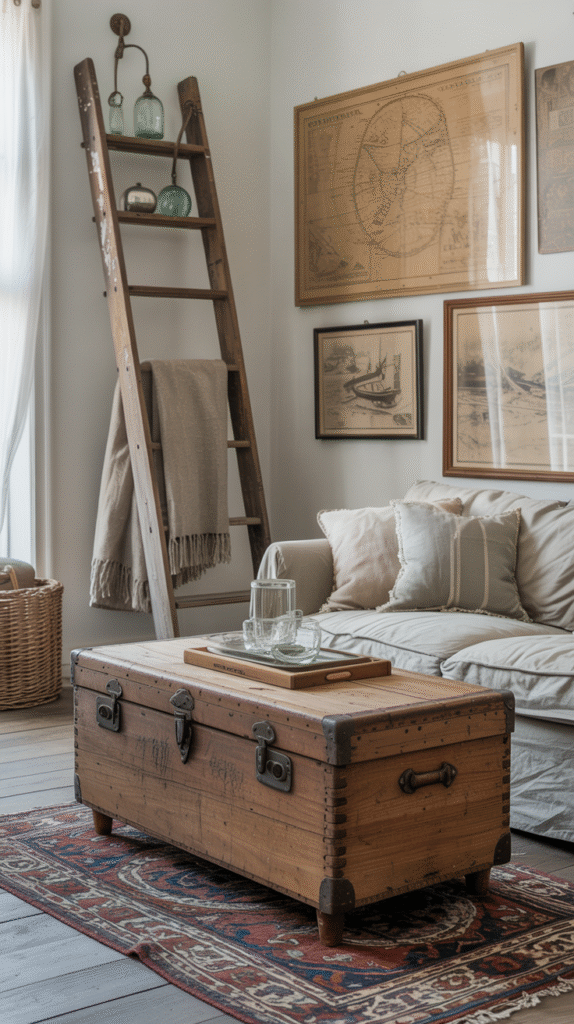
Incorporate Vintage or Antique Pieces
Nothing kills the coastal vibe faster than everything looking brand new and matchy-matchy. I’ve slowly collected vintage pieces that add character:
- An old wooden trunk that serves as storage and a coffee table
- Vintage glass fishing floats displayed on shelves
- A weathered ladder used as a blanket rack
These pieces give the space history and prevent it from looking like a showroom.
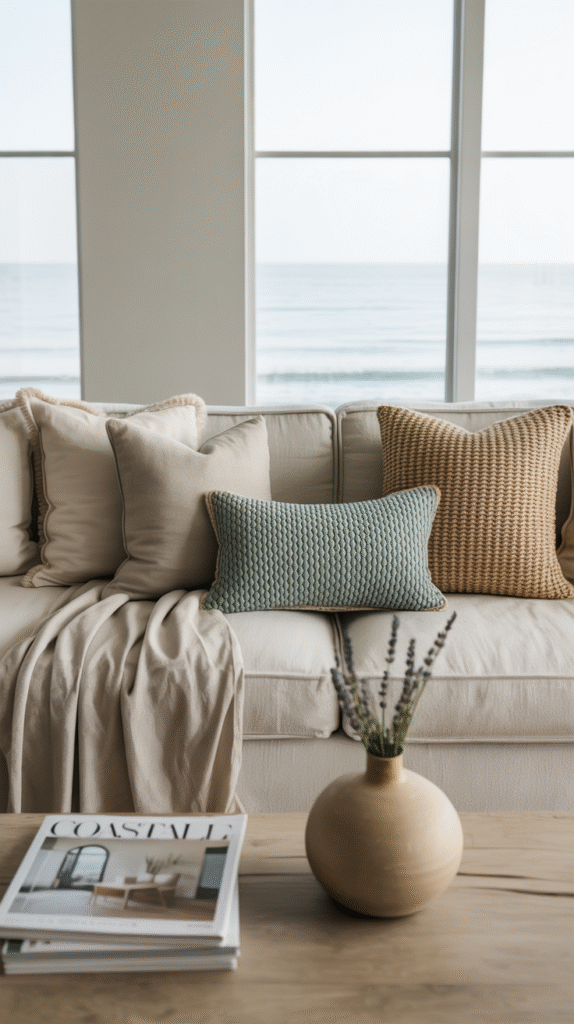
Keep It Uncluttered But Not Sterile
The biggest lesson I learned is that coastal style requires restraint. Every item in the room should either be beautiful, functional, or meaningful (ideally all three). But restraint doesn’t mean cold or unwelcoming.
I regularly do “editing sessions” where I remove items that don’t contribute to the overall feeling I’m trying to create. If something doesn’t make me feel calmer and happier when I look at it, it doesn’t belong in my coastal living room.
The Reality Check: What Actually Works Day-to-Day
After living with this style for over a year now, I can tell you that coastal modern isn’t just about looking good – it actually makes daily life more pleasant. The light, airy feeling genuinely affects my mood, especially during darker winter months. The natural textures and soft colors create a sense of calm that I didn’t expect.
That said, it does require some maintenance. Light colors show dirt more easily, and natural materials need regular care. But honestly? The trade-off is worth it for the peace I feel every time I walk into my living room.
The best part is watching friends’ reactions when they visit. Without fail, people comment on how relaxed and comfortable they feel in the space. That’s when you know you’ve nailed the coastal vibe – when your living room becomes a retreat that everyone wants to experience.
